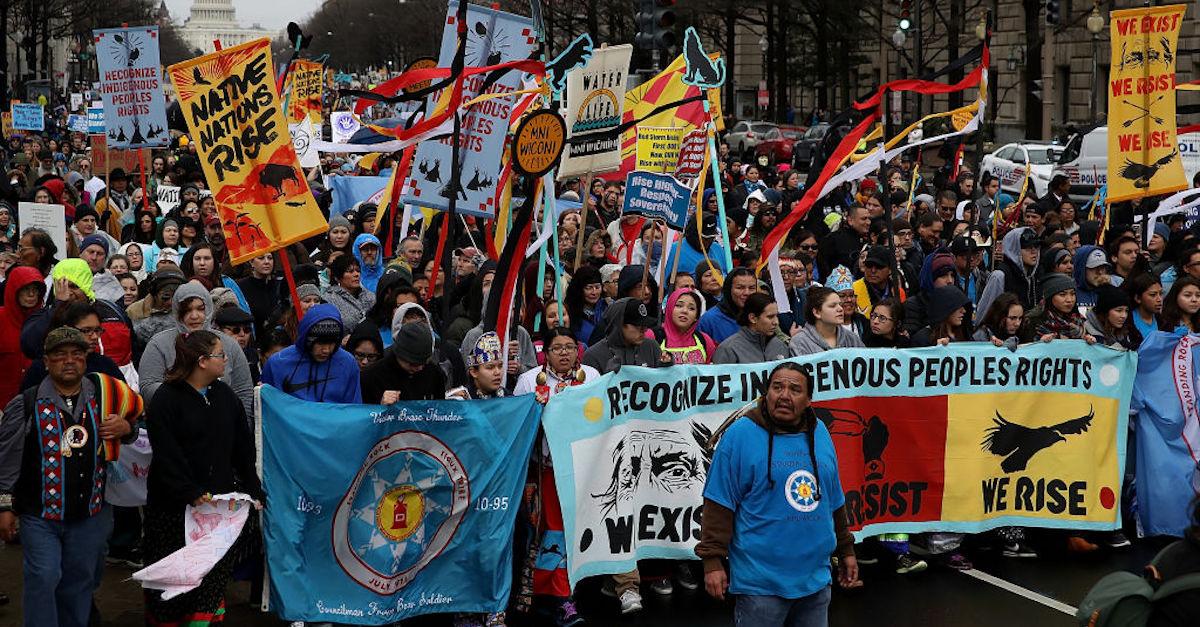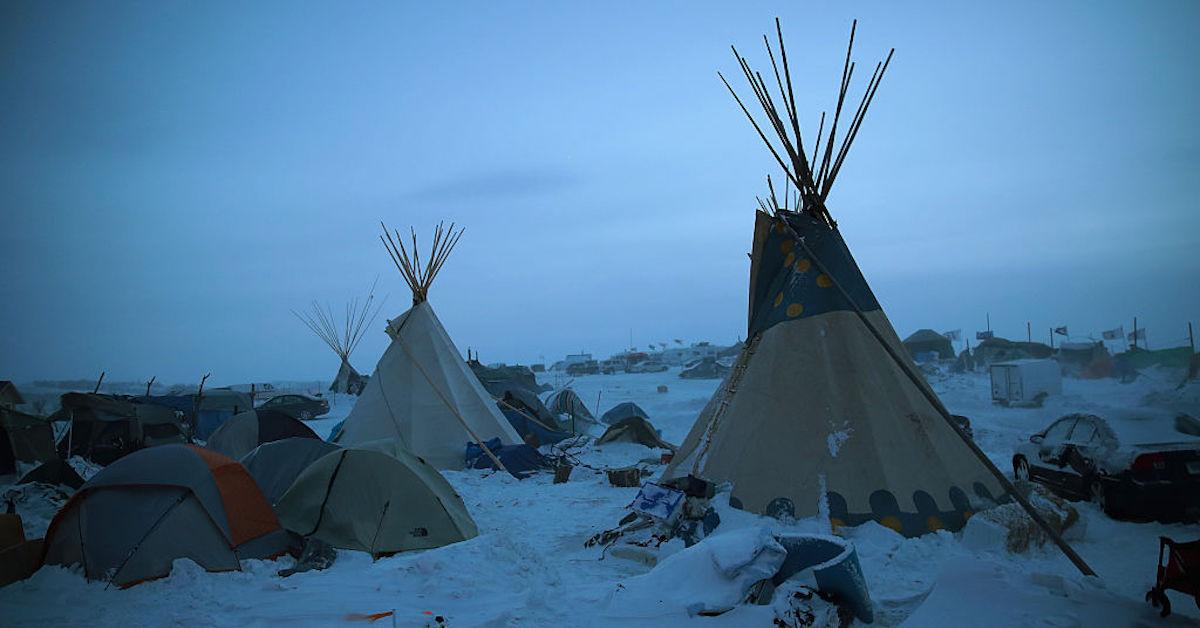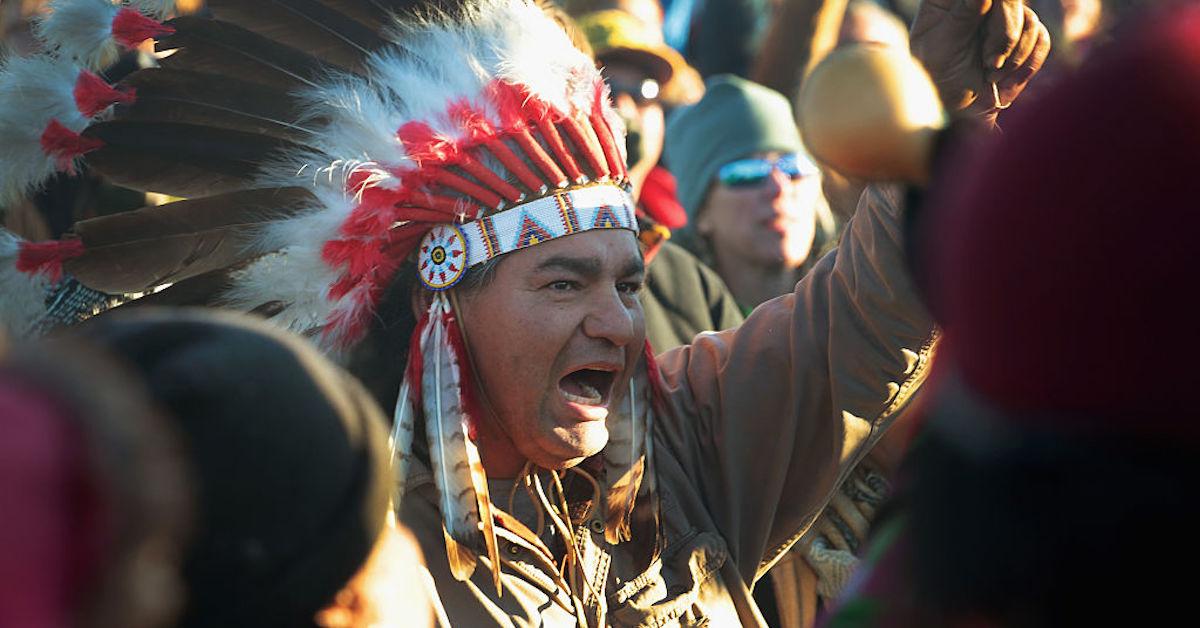The Dakota Access Pipeline Was Shut Down — but Was It Ever Finished?
Published Jan. 28 2021, 10:32 a.m. ET

After his inauguration, president Joe Biden canceled the Keystone XL Pipeline. And although the 46th president unfortunately hasn't committed to fully banning fracking altogether, a major environmental victory was made when the U.S. District Court of Appeals from the D.C. Circuit deemed the Dakota Access Pipeline's crossing at the Missouri River near the Standing Rock Sioux Reservation illegal, and an environmental hazard.
In summer 2020, it was announced that the Dakota Access Pipeline would temporarily shut down, and now, local tribes are pressuring Biden to cancel it permanently. But was the Dakota Access Pipeline ever finished? Here's what you need to know about the highly controversial project that affects both the environment and Indigenous people living in the vicinity.

Was the Dakota Access Pipeline ever finished?
From the moment it was announced in June 2014, the Dakota Access Pipeline has garnered tremendous controversy from environmental activists and nearby tribes alike. Invading sacred Native American lands, jeopardizing the safety of their drinking water, and hurting the surrounding nature, it runs through the Standing Rock Sioux Tribe Reservation, as well as other Indigenous sites, through Illinois, Iowa, North Dakota, South Dakota, the Missouri River, and the Mississippi River.
According to Forbes, the Dakota Access Pipeline construction project was finished and put to use in 2017 thanks to former president Donald Trump. It transports 500,000 barrels of crude oil from North Dakota's Bakken fields daily, and although the project supposedly uses thick piping, especially in "sensitive" places (including the Missouri River-Lake Oahe crossing), locals were understandably unhappy about it being anywhere near drinking water, and have been protesting the matter ever since.
Over 2,000 major accidents have taken place involving pipelines since 1995, according to Business Insider, and they've been responsible for about $3 billion in property damage. From 2013 to 2015, approximately 121 accidents happened annually. Needless to say, the ongoing protests have been more than warranted.

What will happen to the Dakota Access Pipeline?
As previously mentioned, on Tuesday, Jan. 26, three judges from the U.S. District Court of Appeals deemed the Dakota Access Pipeline's Missouri River crossing illegal, mandating further environmental review, as per EcoWatch. The Standing Rock Sioux Tribe uses Lake Oahe for drinking water, and although the Obama Administration was tentative to get the pipeline going, the Trump administration approved it without a full Environmental Impact Statement (EIS) regarding the Missouri River crossing.
This is a major victory for local tribes, but they are now putting pressure on Biden to cancel the pipeline altogether, just as he did for the Keystone XL pipeline.
"Especially after the Keystone XL decision, the pressure is increasing for the Biden administration to take action here," saiid Jan Hasselman, an Earthjustice attorney who represents the Standing Rock Sioux, as per EcoWatch.
"We are pleased that the D.C. Circuit affirmed the necessity of a full environmental review, and we look forward to showing the U.S. Army Corps of Engineers why this pipeline is too dangerous to operate," Standing Rock Sioux Tribe Chairman Mike Faith said in an Earthjustice press release.

A full cancelation of the Dakota Pipeline would be ideal, but we're thrilled baby steps are being made to address particularly unsafe parts of it. Biden, we're counting on you.